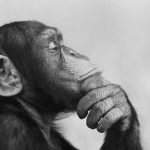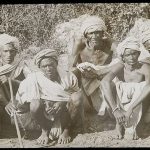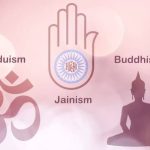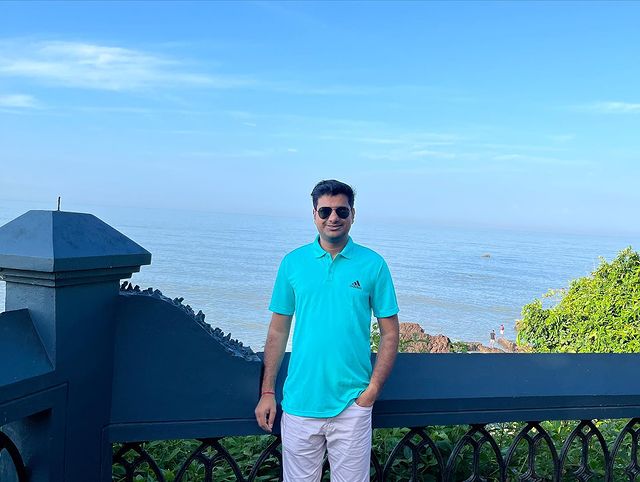
At least 5,000 years ago, the Indian theatre began.
India is where the first book ever written about dramaturgy was written. Bharat Muni gave it the name Natya Shastra, which means “the grammar or holy book of theatre.” People think it was made between 2000 BCE and the 4th century CE.
Reciting, singing, and dancing became important parts of the theatre in India as it evolved from a story form. Our theatre was basically theatrical from the start because of this focus on narrative elements.
Table of Contents
- 1 Traditional Theatre Form in India
- 2 Classical Sanskrit Theatre
- 3 Authors of famous plays in Sanskrit
- 4 Different Kinds of Sanskrit Plays
- 5 Elements of the Sanskrit Play
- 6 Decline of Interest in Sanskrit Theatre
- 7 Folk theatre of India
- 8 Entertainment Theatre
- 9 Northern India’s Theatres
- 10 Eastern India’s Theatres
- 11 Western India’s Theatres
- 12 Southern India’s Theatres
Traditional Theatre Form in India
| Traditional Theatre Form | States in which it is popular |
| Bhaona | Bengal, Orissa, Assam, U.P |
| Tamaasha | Maharashtra |
| Dashavatar | Konkan Coast |
| Krishnattam | Kerala |
| Mudiyettu | Kerala |
| Theyyam (Kaliyattam) | Kerala |
| Koodiyaattam | Kerala |
| Yakshagana | Karnataka |
| Therukoothu | Tamil Nadu |
Because of this, Indian theatre combines all of the other forms of literature and fine arts into its physical show. This includes literature, mime, music, dance, movement, painting, sculpture, and architecture. All of these are put together and called “Natya,” which is the English word for “theatre.”
Classical Sanskrit Theatre
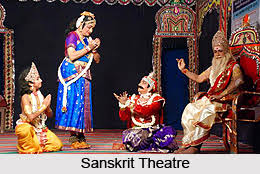
The Sanskrit theatre was the first type of theatre in India. Before the development of theatre in other parts of Asia, it started after the development of Greek and Roman theatre.
It began sometime between the 2nd century BCE and the 1st century CE. It was at its best between the 1st century CE and the 10th century CE, when India was at peace and hundreds of plays were written.
Most shows in ancient India were one of two types:
Lokadharmi: Realistic portrayals of everyday life and human actions on stage, and the natural way things are set up.
Natyadharmi: Traditional plays that used stylized movements and symbols and were seen as more artistic than practical.
Authors of famous plays in Sanskrit
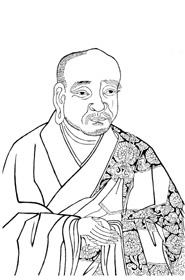
Sariputraprakarana, which was written by Asvaghosa, a member of Kanishka’s court from 78 A.D., was one of the first plays ever written. to 144 A.D.
The main character of this play is a courtesan. The play is funny, but it is about Buddhist lessons.
Soon after that, Bhasa came along. Thirteen of his works still exist, with Swapanavasavadatta being the most well-known.
Bhasa got his ideas for his stories from many different places, such as the Ramayana, Mahabharata, Puranas, and semi-historical stories.
Another famous writer of the time was Sudraka.One of his best-known plays was Mricchakatika. The thing that makes Sudraka’s plays different from those of his peers is that he adds conflict to them.In addition to a hero and a heroine, the Sanskrit story has one of the few bad guys.
Kalidasa is the best known of all the Sanskrit dramatists. He was one of the “nine jewels” in the court of the famous Vikramaditya. He has left three dramas: Malavikagnimitra, Vikramorvashi and Shakuntalam.
Bhavabhuti is one of the writers who came to be in the second half of the classical time. His play Uttaramcharitra, which he wrote around the year 700 CE, is known as the best theatre of its time.
Shudraka, Harsha, Visakhadatta, Bhasa, Kalidasa, and Bhavabhuti were without a question the six best Sanskrit playwrights of all time. Their dramatic works in Sanskrit have made a big difference.
Kalidasa’s Shakuntala, King Harsha’s Ratnavali, Bhasa’s Swapna-vasavadatta, Bhavabhuti’s Uttararama-charita and Mahavira-charita, Visakhadatta’s Mudrarakshasa are some of the best Sanskrit plays.
Different Kinds of Sanskrit Plays
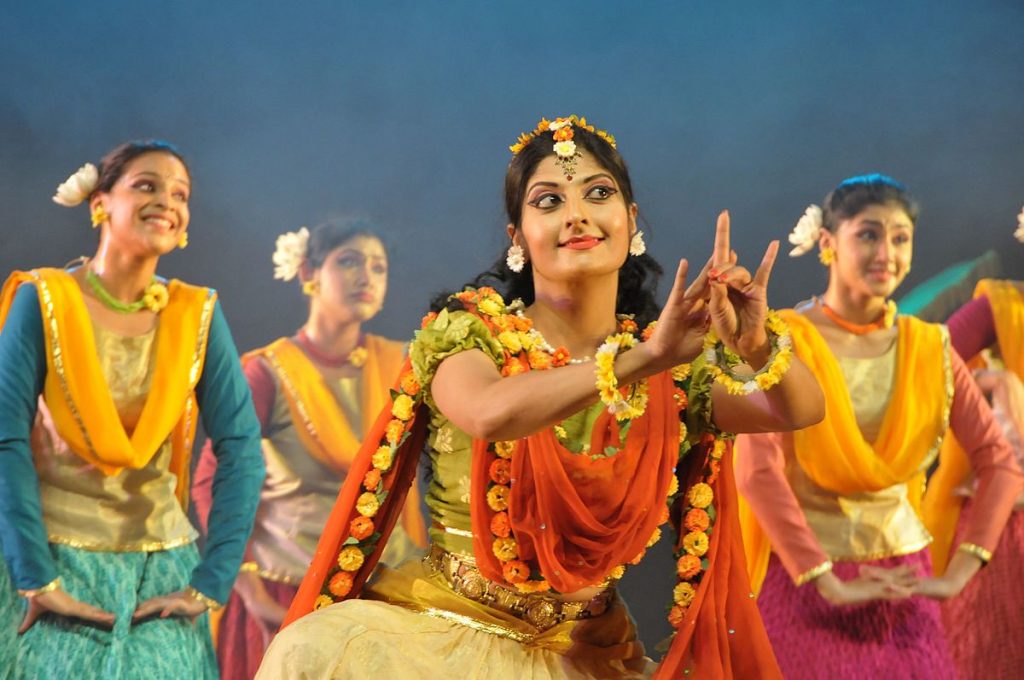
In ancient Sanskrit, plays were divided into ten types: Nataka, Prakarna, Anka, Vyayoga, Bhana, Samvakara, Vithi, Prahasana, Dima, and Ithamgra.
Only the Nataka and the Prakarna are talked about in the Natyashastra.
The Nataka is made up of stories like Swapanavasavadatta, Uttaramcharitra, and Shakuntala.
There are between five and seven acts in each play. Plays that belong to the category of Prakarna tell stories that their writers made up.
Elements of the Sanskrit Play
The development of Sanskrit plays was almost like a ritual, as shown below:
A number of pre-play traditions, known as purva-ranga, with music and dance were done before Sanskrit plays. Most of them were done behind closed doors.
In order to ensure the success of the producer and the actors’ good fortune, the Sutradhara (the director) and his helpers worshipped (Puja) the deity in charge of the theatre.
After that, the lead actor was called onstage to start the play with a prologue that told the audience where and when the play would take place and who wrote it.
Decline of Interest in Sanskrit Theatre
Some of the things that led to the fall of Sanskrit theatre are:
As Sanskrit playwrights moved away from drama and towards poetry, lyrical works started to become more famous than dramatic ones.
New playwrights had less room to be creative because of the strict rules, so they had to turn to other styles.
Its fall was also caused by the fact that it was only used in religious settings.
The Sanskrit theatre fell out of favour with the arrival of Muslim masters.
Folk theatre of India
India has a long history of folk theatre. Folk theatre first emerged as a form of art to depict the uncensored truths of life in the old Vedic culture and even in Buddhist literature. But it wasn’t until the Middle Ages that Indian theatre began to incorporate folk theatre into its repertoire.
As illustrations from puranas, eposes, historical epics, myths, and biographies of the celestial heroes, folk theatre first appeared in India in the 15th or 16th centuries.
Indian folk culture has a long and illustrious past, dating back to ancient times, as evidenced by folk theatre.
In India, narrative is the primary form of folk theatre. While emulating a highly dramatic story style, Indian folk theatre has maintained its age-old narrative form.
Folk theatre is unique to each state in India. Since the beginning of time, Indian folk theatre has attracted people from all over the world.
Folk theatre in India was a beautiful example of the “nine rasas” of Indian theatre. Even the true spirit of the ancient theatres was captured in some of the folk theatres.
Indian folk theatre is known for its elaborate costumes, masks, choir, loud music, and folk dance.
Indian folk theatre is more than just a form of theatre because of its incredible energy. It tells the story of Indian drama’s journey from the eposes to the modern theatre pattern.
There are three broad groups into which Indian folk theatre can be divided:
Ritual Theatre
- Ankia Nat
- Kala
- Ramlila
- Raslila
- Bhuta
- Ramman
Entertainment Theatre
- Bhavai
- Daskathia
- Garodas
- Jatra
- Maanch
- Kariliya
- Nautanki
- Pandanvani
- Oja-Pali
- Powada
- Swang
- Tamasha
- Villu Pattu
- Bhanu Pather
- Bhaona
- Dashavatar
- Bhand
South Indian Theatre
Yakshagana
- The Burra Katha
- Bayalata
- Theyyam
- Krishna Attam
- Kuruvanji
- Pagati Veshaalu
- Tal-Maddale
Northern India’s Theatres
Bhanu Pather
Kashmir’s traditional form of theatre. A special blend of dance, singing, and acting.
The form is known for biting criticism, wit, and parody.
The surnai, nagaara, and dhol are used to make music.
Most of the players in Bhand Pather come from a farming background, and their way of life, values, and sensitivity can be seen in the play.
Swang
Swang is the word for acting.
At first, it was mostly about music. Over time, prose also had a part to play in the conversations.
People like it in Haryana and western UP.
You can see the softness of the feelings, the fulfilment of rasa, and the growth of the character.
Rohtak and Haathras are where the two most important kinds of Swang come from. Haryanvi (Bangru) is the language used in Rohtak style, while Brajbhasha is used in Haathras style.
Nautanki
connected to the state of Uttar Pradesh.
Kanpur, Lucknow, and Haathras are the most famous places for this traditional theatre style.
Doha, Chaubola, Chhappai, and Behar-e-tabeel are the rhythms that are used in the lines.
Once upon a time, only guys took part in Nautanki performances, but now women are also taking part.
Gulab Bai of Kanpur is one of the people who are revered. She gave this old theatre form a new meaning.
Raasleela
Uttar Pradesh’s form of theatre.
It is only based on stories about Lord Krishna.
People think that Nand Das wrote the first plays about Krishna’s life.
The prose conversations went well with the songs and scenes from Krishna’s jokes.
Maach
Madhya Pradesh’s traditional form of theatre.
Maach is both the name of the stage and the name of the play.
Between the conversations in this theatre form, songs take centre stage.
In this style, the word for dialogue is bol, and the word for rhyme in a story is vanag. Rangat is the name of the music in this theatre form.
Ramman
Ramman in Uttarkhand.
It is a multidisciplinary culture event that includes theatre, music, historical reenactments, and traditional oral and written stories.
It is held every year in April, during the month of Baisakh, in the grounds of the Bhumiyal Devta temple in Chamoli, Uttarakhand.
Mask dances are only done by the Bhandaris, who are of the Ksatriya race.
On the UNESCO list of “Representative Items of the Intangible Cultural Heritage of Humanity.”
Ramlila
In Uttar Pradesh, Ramlila is usually put on during the Dussehra holiday.
The Ramlila holiday lasts for ten days, ending with the Dussehra festival.
People enjoy this holiday because Lord Rama, who stands for good, beat Ravana, who stands for evil.
During the Ramlila, the lines of the Ramayana are constantly recited while dance and nice music play in the background.
It is a wonderful mix of dance, music, mime, Abhinaya, and poetry that is shown to holy and enthusiastic crowds.
Kariyita
It is traditional theatre from Himachal Pradesh.
In the Himachal Pradesh districts of Shimla, Solan, and Sirmour, it is an open-air folk theatre form that is very famous.
Most of Kariyala is based on social comedy and is meant to be funny. This type of art shows all kinds of humour through sharp and biting satires about the government and social problems.
Eastern India’s Theatres
Ankia Nat
Ankia Naats are one-act plays that are done in Assam.
Most people think that the monk and social reformer Srimanta Sankardeva came up with the Ankia Naat.
A Bhaona is a certain way of putting on an Ankia Naat. Most of the time, the plays have live instruments, singers, dance and elaborate outfits.
In an Ankiya Nat, the Sutradhara is very important because he recites slokas, sings dances, and writes written explanations for each act of the play.
Oja-Pali
It is a traditional Indian dance play from the state of Assam.
Ojapali is done in a group and is thought to have come from the Kathakata style.
The group was made up of an Oja, who led the performance, and four or five palies, who played cymbals to add a steady beat to the performance.
Many people think that Shankardeva got his ideas for his Ankiya Bhaona from Ojapali.
Jatra
Musical plays were put on at fairs to honour gods or as part of religious ceremonies and practises.
Bengal is where this form was born and grew up.
Chaitanya’s impact led to more people going on the Krishna Jatra. Later, though, Jatra also started to include love stories from the outside world.
When Jatra was first made, it had music. Later on, dialogue was added.
The actors talk about how the scene changes, where the action takes place, etc.
Bidesia, Bihar
It is the traditional theatre of the state of Bihar.
The story of Bidesiya is about a man who has to leave his town and family to find work.
This art form was started by Bhikhari Thakur.
With the majority of the conversations taking place through music based on existing Bhojpuri folk songs and tunes, it is mainly musical theatre.
Bidesiya is still famous in Bihari villages because its theme is still true: men have to leave their families and go to the cities to find work, leaving their wives and children behind.
Prahlad Natak
“In Odisha’s Ganjam area, Prahalad Natak, a folk theatre, was born.
Danda, which are special performances, make it hard for new people to learn how to do this folk art.
Prahlada Nataka only has one play, which is based on the story of Narasimha, who was Vishnu’s lion form.
At the right times, both speaking and instrumental music make the effect stronger. When music is added to dialogue, it makes it more emotional than if it were just spoken normally.
A lot of native Odissi music is used in Prahlada Nataka.
Suanga
The word “suanga” literally translates to “mask or farce” in the context of singing folk theatre.
This was most famous along the coast of Odisha until the early 1900s.
The amazing Prahlada Nataka is also based on the method of Suanga.
Western India’s Theatres
Bhavai
The traditional form of theatre in Gujarat.
Kutch and Kathiawar are the places where this form is made.
The instruments used in Bhavai are: bhungal, drum, flute, pakhaawaj, rabaab, sarangi, anjeera, etc.
In Bhavai, spiritual and romantic feelings come together in a way that doesn’t happen very often.
Tamaasha
Maharashtra’s traditional folk theatre.
It grew out of folk styles like Gondhal, Jagran, and Kirtan.
In Tamaasha, unlike other theatre genres, the female actor is the primary dancer in the play. She is called Murki.
Classical music, quick footwork, and expressive movements make it possible for dance to show all feelings.
Southern India’s Theatres
Dashavatar
It is the most developed form of theatre in the Konkan and Goa areas.
The actors act out the ten forms of Lord Vishnu, who is the god of protection and new ideas.
Matsya (the fish), Kurma (the turtle), Varaha (the boar), Narsimha (the man who looks like a lion), Vaman (the dwarf), Parashuram, Rama, Krishna (or Balram), Buddha, and Kalki are the ten incarnations.
The people who perform Dashavatar also wear masks made of wood and papier mache.
Krishnattam
It is Kerala’s “folk theatre.”
King Manavada of Calicut supported its creation in the middle of the 17th century.
Krishnattam is a series of eight shows that are put on for eight days in a row.
The plays are Avataram, Kaliamandana, Rasa krida, kamasavadha, Swayamvaram, Bana Yudham, Vivida Vadham, and Swargarohana.
The stories are all about Lord Krishna. They show his birth, the tricks he played as a child, and his many good deeds that show how good always wins over evil.
Mudiyettu
It is an ancient form of theatre in Kerala.
It is held in the month of Vrischikam, which is between November and December.
As an offering to the Goddess, it is usually only done in the Kali shrines of Kerala.
It shows how the goddess Bhadrakali won against the asura Darika.
The seven characters in Mudiyettu: Shiva, Narada, Darika, Danavendra, Bhadrakali, Kooli and Koimbidar (Nandikeshvara) are all highly made-up.
Theyyam
It is a traditional form of theatre in Kerala that is very famous.
The word ‘Theyyam’ comes from the Sanskrit word ‘Daivam,’ which means God. So, people call it God’s dance.
Different castes do Theyyam to appease and worship the spirits of relatives and folk heroes.
One of the things that makes Theyyam stand out is the beautiful costumes and tall, awe-inspiring headgears (mudi) made of arecanut splices, bamboo, arecanut leaf sheaths, and wooden planks that are dyed with turmeric, wax, and arac to make bright colours.
Koodiyaattam/ Kuttiyaattam
It is one of the oldest types of traditional theatre in Kerala. It is based on Sanskrit theatre traditions.
In this type of theatre, the characters are the Chakyaar, or actor, the Naambiyaar, who play the instruments, and the Naangyaar, who play the parts of women.
The main characters are the Sutradhar, who tells the story, and the Vidushak, who act as fools.
The lines can only be said by the Vidushak.
This dance and theatre style is distinctive because it focuses on how the hands and eyes move.
It is a Masterpiece of the Oral and Intangible Heritage of Humanity, which is a title given by UNESCO.
Yakshagaana
It is the oldest form of theatre in Karnataka.
It is based on stories from the Puranas and myths.
The most well-known stories come from the Mahabharata. Draupadi swayamvar, Subhadra vivah, Abhimanyu vadh, Karna-Arjun yuddh and from Ramayana i.e. Raajyaabhishek, Lav-kush Yuddh, Baali-Sugreeva yuddha and Panchavati.
Therukoothu
It is the most famous type of Tamil Nadu folk drama.
Means “street play” in English.
Most of the time, it is done at the yearly temple festivals of Mariamman, who is known as the Rain Goddess, in order to get a good harvest.
A series of eight plays about Draupadi’s life is at the centre of Therukoothu’s large number of plays.
The Sutradhara of the Therukoothu show, Kattiakaran, tells the crowd what the play is about, and Komali makes them laugh with his foolery.
Burrakatha/ Harikatha
A way of telling stories that is used in towns in the states of Andhra Pradesh, Karnataka, and Tamil Nadu.
There is one lead performer and two other performers in the group.
It’s a story-based show with prayers, solo acting, dance, songs, poems, and jokes.
The topic will either be a story from Hindu mythology or a social problem in the present day.
Harikatha, which is also called Katha Kalakshepa, is a version that tells stories about Lord Krishna, other Gods, and heroes.
Veedhi Natakam
In Telugu, ‘Veedhi’ means ‘way or an open place’. Because the shows about Bhagavan were put on in public, they were called Veedhi Natakam.
Bhagathas, who were followers of Bhagwan, put on the plays. Sometimes, they were also called Veedhi Bhagavathams. It is the most famous form of traditional theatre in Andhra Pradesh.

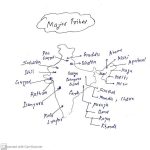

![Ancient History Notes for UPSC [Part 14] Art & Architecture images-2021-07-19T154931.078](https://iasbio.com/wp-content/uploads/2021/07/images-2021-07-19T154931.078.jpeg)


